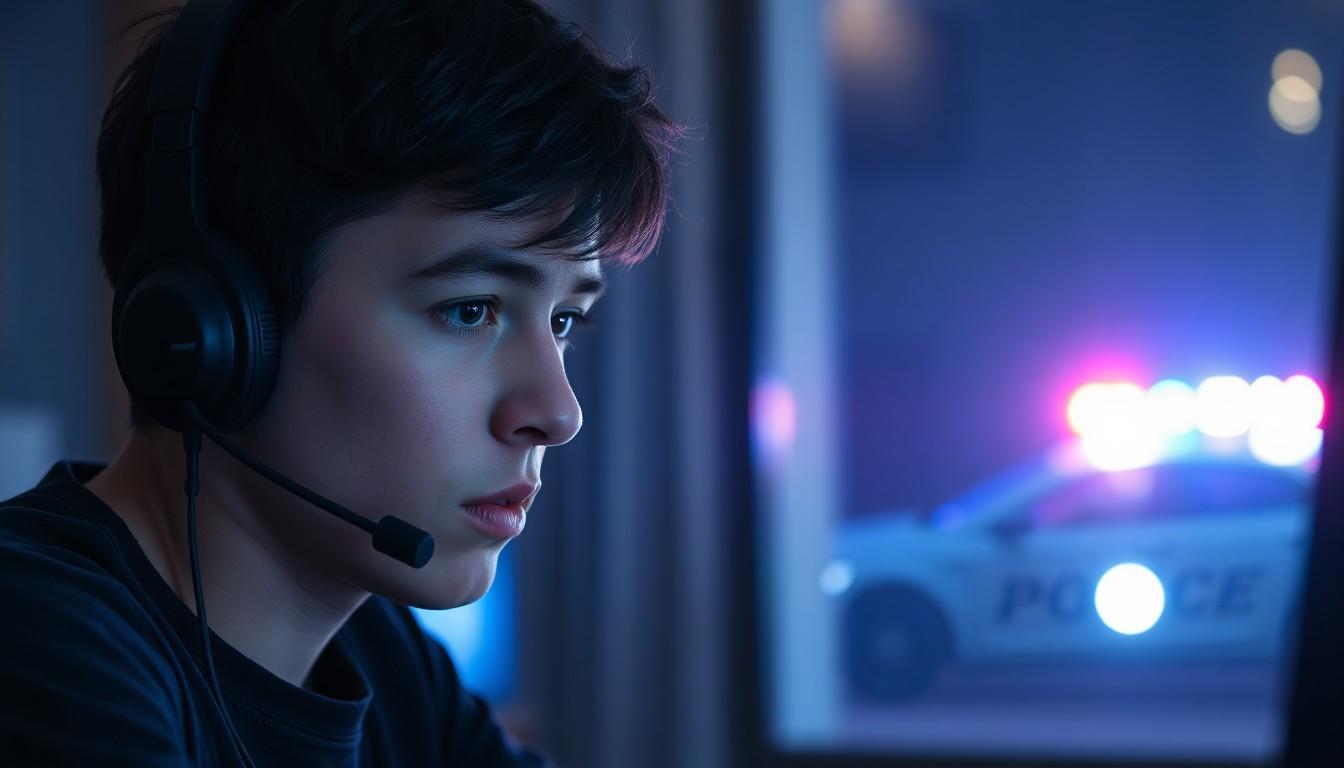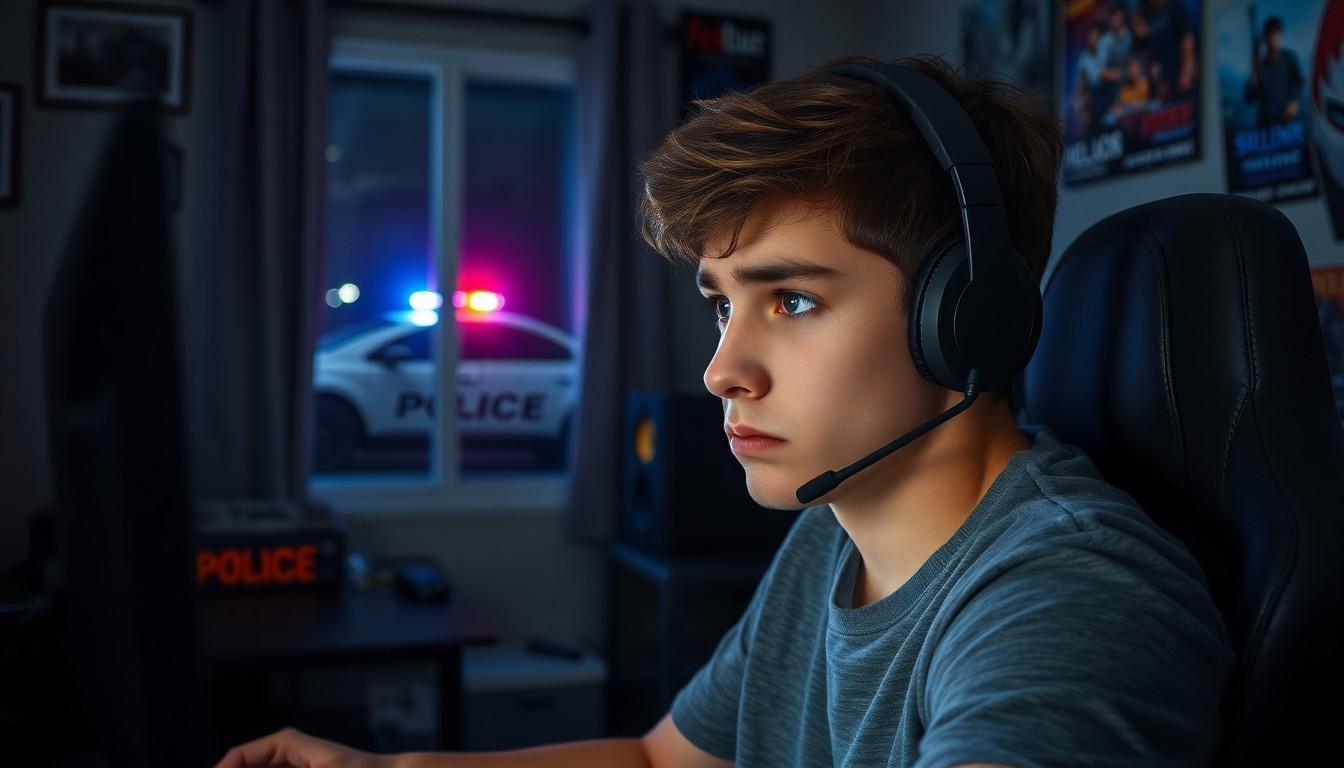In the wild world of streaming, where gamers become celebrities overnight, a dark cloud looms: swatting. It’s not just a prank; it’s a dangerous game that can turn a cozy livestream into a chaotic scene worthy of a blockbuster movie. Picture this: a streamer’s in the middle of an epic boss battle when suddenly, the door bursts open and in come the police, guns drawn. Talk about a plot twist!
But why do these online entertainers become targets for such reckless stunts? Is it jealousy, a misguided sense of humor, or something more sinister? Understanding the motives behind swatting can shed light on this alarming trend and help protect both streamers and their fans. Let’s dive into the bizarre world of swatting and uncover the reasons why some viewers take their love for streaming to the extreme.
Why Do Streamers Get Swatted
Swatting poses a serious threat in the streaming community. This dangerous tactic involves falsely reporting an emergency to provoke a heavy police response at the victim’s location.
Definition of Swatting
Swatting refers to the act of placing a false emergency call with the intent of dispatching law enforcement to an unsuspecting individual’s address. Typically, the perpetrator makes claims about hostage situations or active shooters to elicit a swift and aggressive response. Law enforcement often arrives with full tactical units, creating an incredibly tense situation for the targeted streamer. This malicious act highlights the severe risks that come with online visibility in gaming and streaming environments.
History of Swatting Incidents
Swatting incidents have gained notoriety over the past decade, particularly within competitive gaming. Early instances date back to 2008, with gaming rivals targeting one another. A notable case in 2017 involved the tragic death of a man during a swatting event, prompting increased media attention. As streaming platforms gained popularity, swatting became a more frequent event aimed at streamers, reflecting a disturbing trend fueled by a desire for notoriety. Law enforcement agencies now recognize the escalation in swatting cases and often undertake measures to counteract this threat.
Reasons Streamers Get Swatted

Swatting occurs for various reasons, often rooted in the darker aspects of online interactions. Understanding these motivations helps to shed light on this dangerous trend.
Targeted Harassment
Streamers often become targets of harassment due to their public profiles. Personal information leaks can occur, leaving them vulnerable to malicious individuals. Some harassers utilize swatting as a method to instill fear and disrupt streams. This act creates a sense of power, allowing aggressors to exert control over their victims. Many experienced streamers report multiple harassment attempts, driving home the deep-seated animosity they may face. As the number of viewers increases, so does the risk of targeted harassment. Engaging with the community can draw the attention of those with malicious intent, exacerbating the issue.
Popularity and Attention
Popularity drives many harmful actions within the streaming community. Individuals may perceive swatting as a way to gain notoriety among peers. The spectacle of police intervention often amplifies their online fame, albeit negatively. Some feel thrill in causing chaos, seeking viral moments at any cost. Streamers’ visibility on platforms attracts both fans and detractors, creating a mixed atmosphere. Noteworthy incidents often spread rapidly across social media, further encouraging copycat behavior. Streamers represent easy targets for attention-seeking individuals wanting to make a name for themselves.
Impact of Swatting on Streamers
Swatting significantly impacts streamers, affecting their mental health and community dynamics. This phenomenon creates an environment of fear and anxiety.
Psychological Effects
Streamers often experience heightened stress and paranoia following a swatting incident. Many report anxiety that persists long after the event. Fear of future attacks can lead to changes in behavior and lifestyle, including streaming less frequently or increasing security measures. Depression is common among victims, stemming from the trauma and public exposure involved. Furthermore, trust in the online community may erode as streamers feel targeted and vulnerable. The psychological toll can impede their ability to engage with viewers effectively.
Consequences for Viewers and the Community
Viewers face significant consequences when a streamer is swatted. Fear permeates the community, leading to concerns about safety during live events. Some viewers may choose to disengage from streams due to potential dangers. Community dynamics shift, with trust in public interactions diminishing. Additionally, heightened media attention can overshadow positive community events, allowing harassment behavior to thrive. The ripple effects of swatting extend beyond the streamer, influencing the overall welfare of the streaming community.
Preventative Measures for Streamers
Streamers can implement various strategies to minimize the risk of swatting, focusing on security precautions and legal protections.
Security Precautions
Streamers should utilize two-factor authentication on all accounts. Enabling this feature significantly reduces unauthorized access risks. Privacy settings across social media profiles must be tightened to limit personal information visibility. Regularly changing streaming schedules and using pseudonyms can also reduce predictability. Strong passwords that contain a mix of characters enhance account security. Engaging viewers in discussions about privacy can foster a more aware community. Additionally, streamers might consider using a Virtual Private Network (VPN) to obscure their IP address. Some may opt for security systems and cameras to deter potential threats, allowing for a more secure streaming environment.
Legal Protections
Streamers require knowledge of local laws related to swatting. Understanding these laws empowers them to take appropriate legal action against offenders. Reporting threats to law enforcement should become a standard practice, aiding in swift responses. Collaborating with legal experts ensures streamers know their rights. Some may also establish relationships with local authorities to facilitate communication during emergencies. Filing restraining orders against known harassers can provide an extra layer of protection. Streamers can create and distribute awareness materials that educate their communities on the implications of swatting, fostering a culture of accountability. Such awareness can deter potential aggressors and promote a safer online presence.
Swatting remains a critical issue within the streaming community. Its impact extends far beyond the immediate danger posed to streamers. The psychological toll on victims can lead to long-term anxiety and distrust. As the trend continues to grow, understanding the motivations behind swatting is essential for developing effective prevention strategies.
Streamers and their audiences must prioritize safety and awareness to combat this malicious act. By implementing security measures and fostering community discussions, they can create a more secure environment. Ultimately, addressing swatting requires collective effort and vigilance to protect those who entertain and connect with viewers online.




